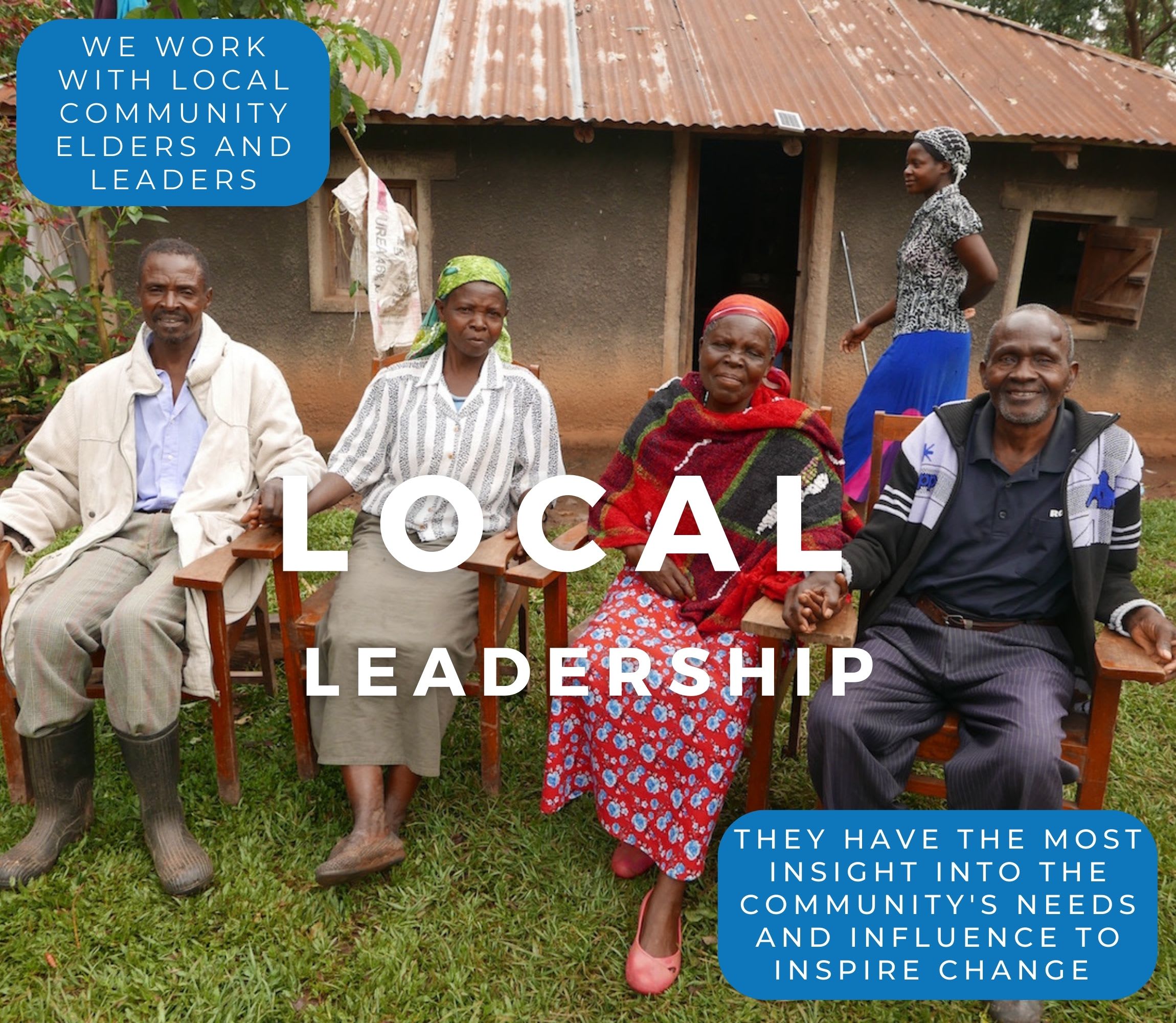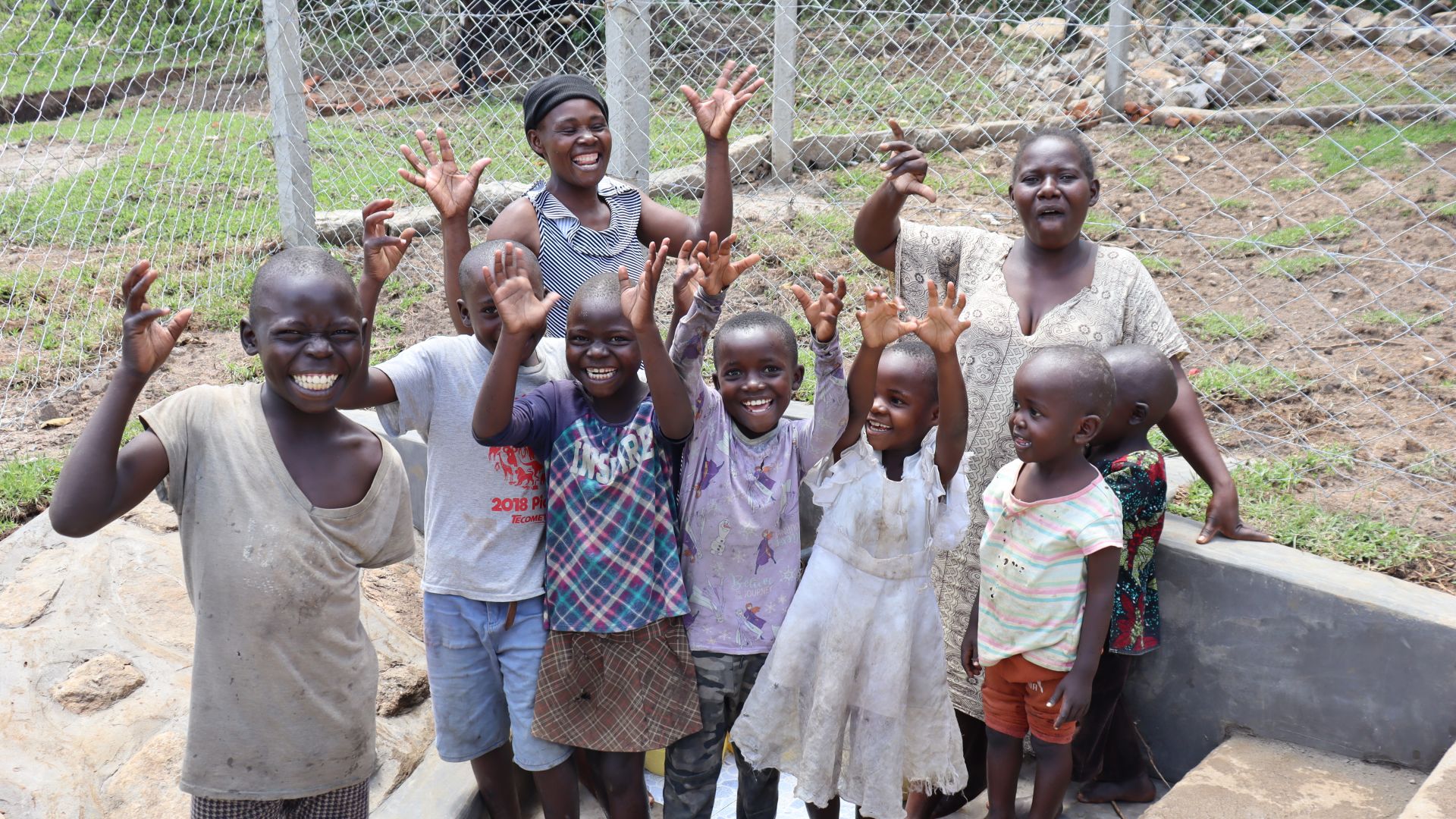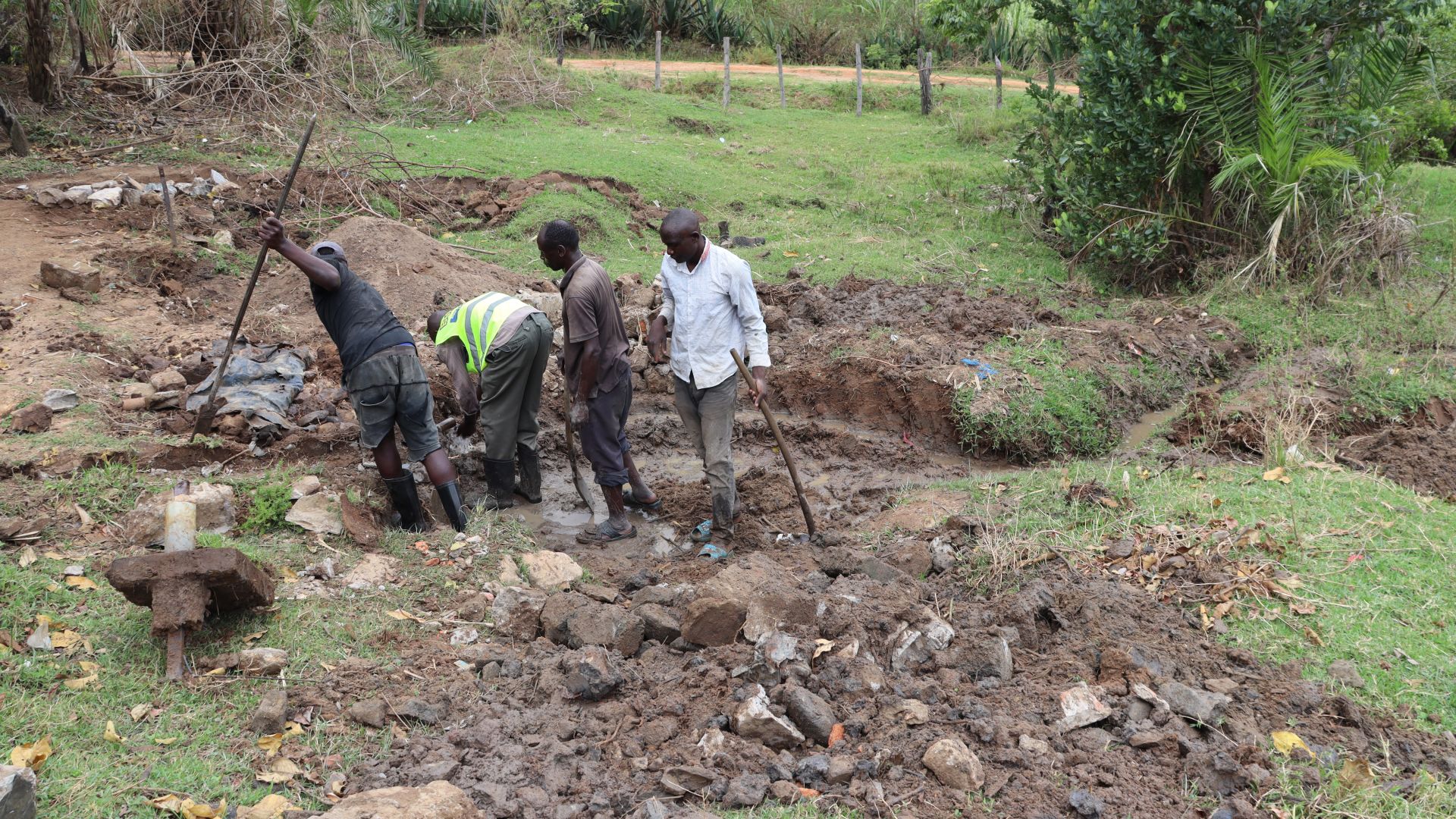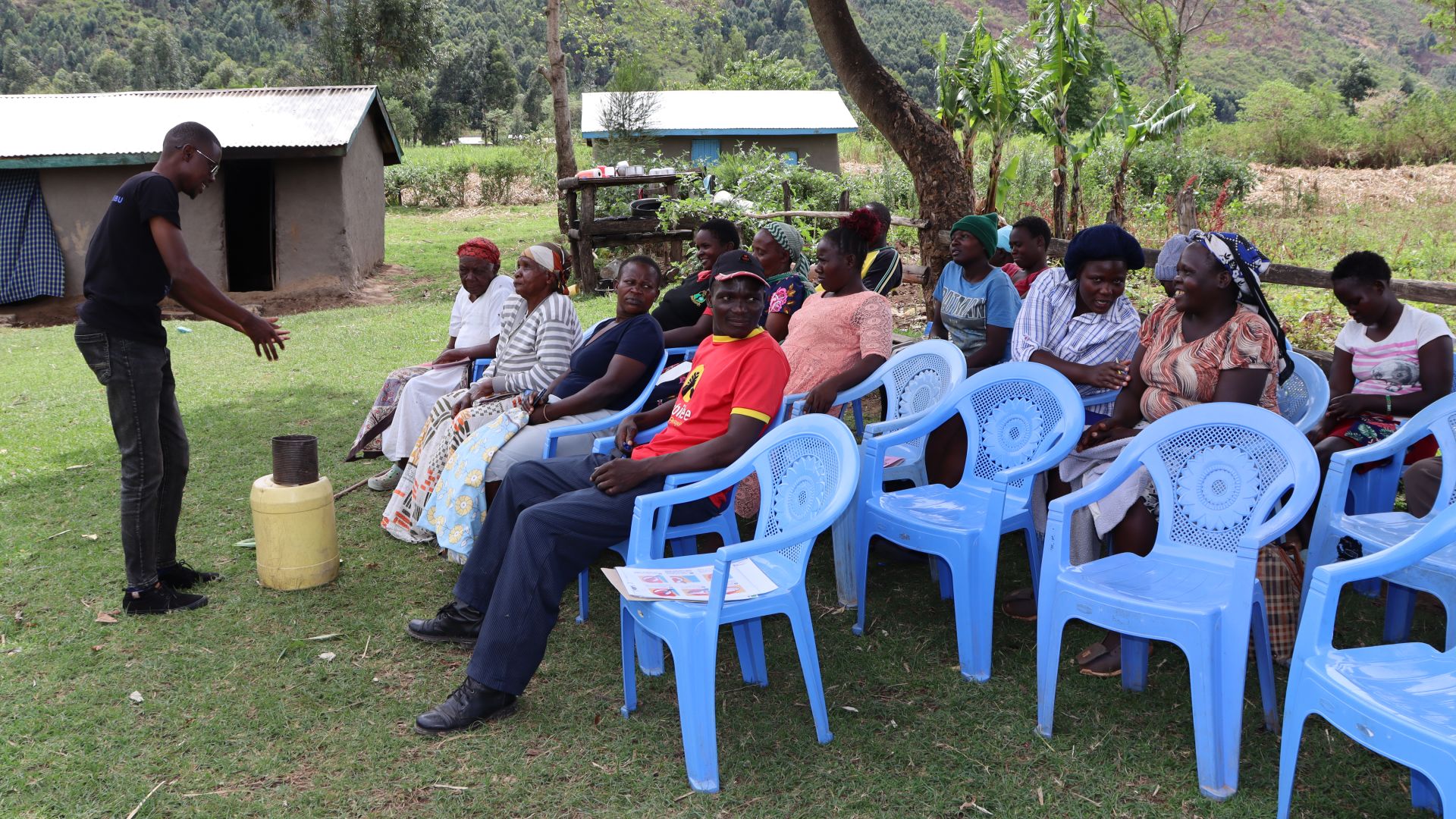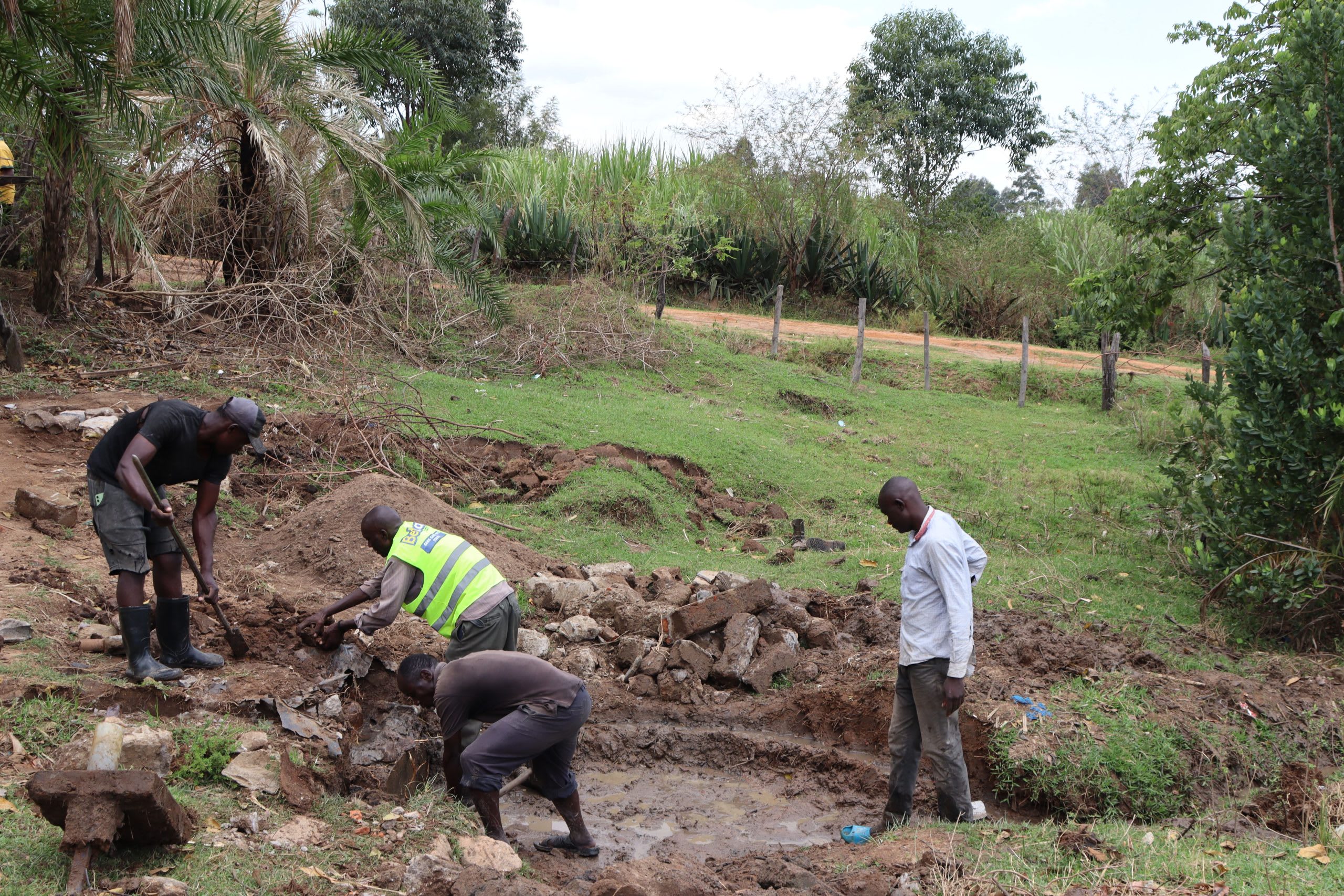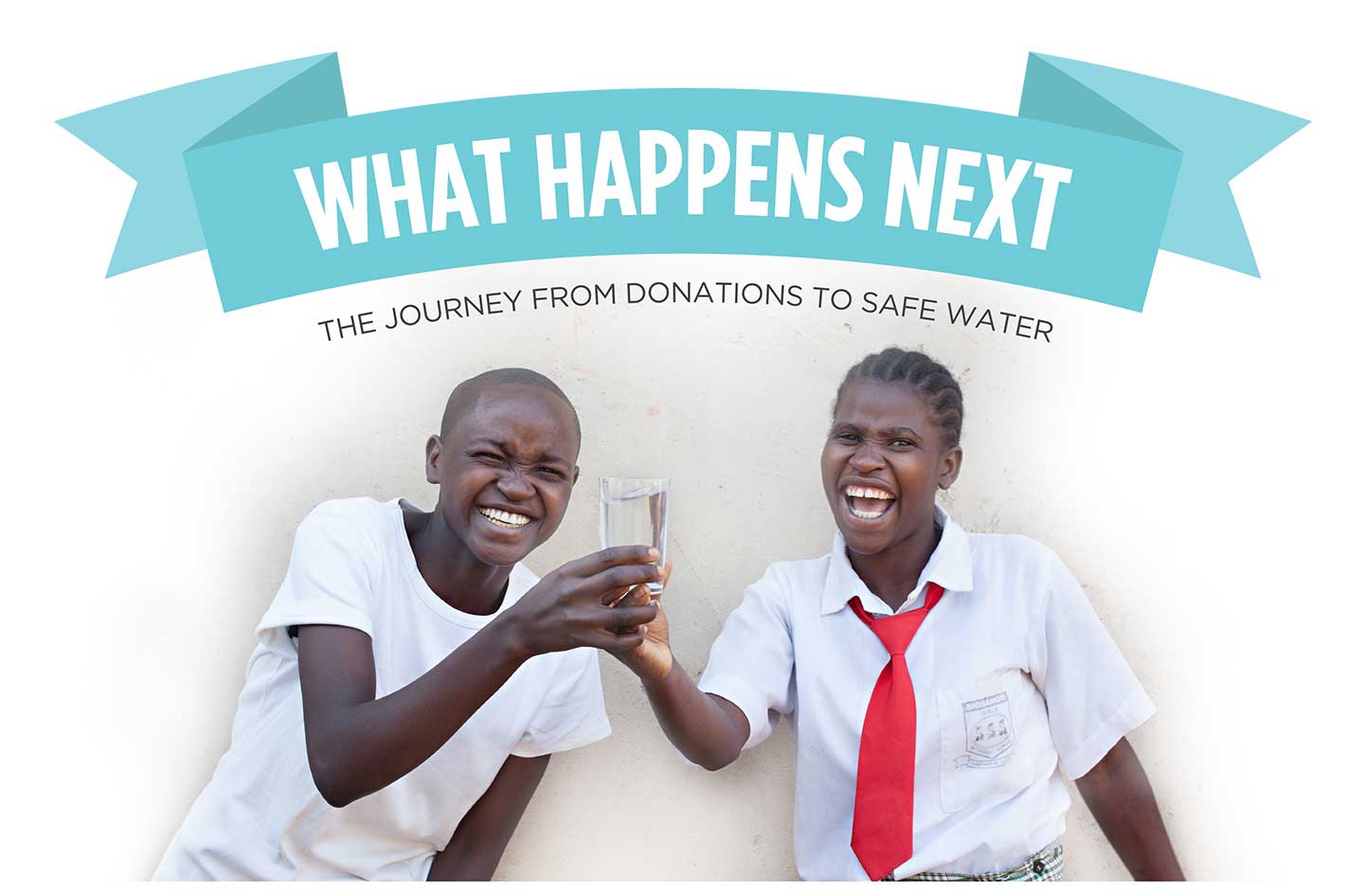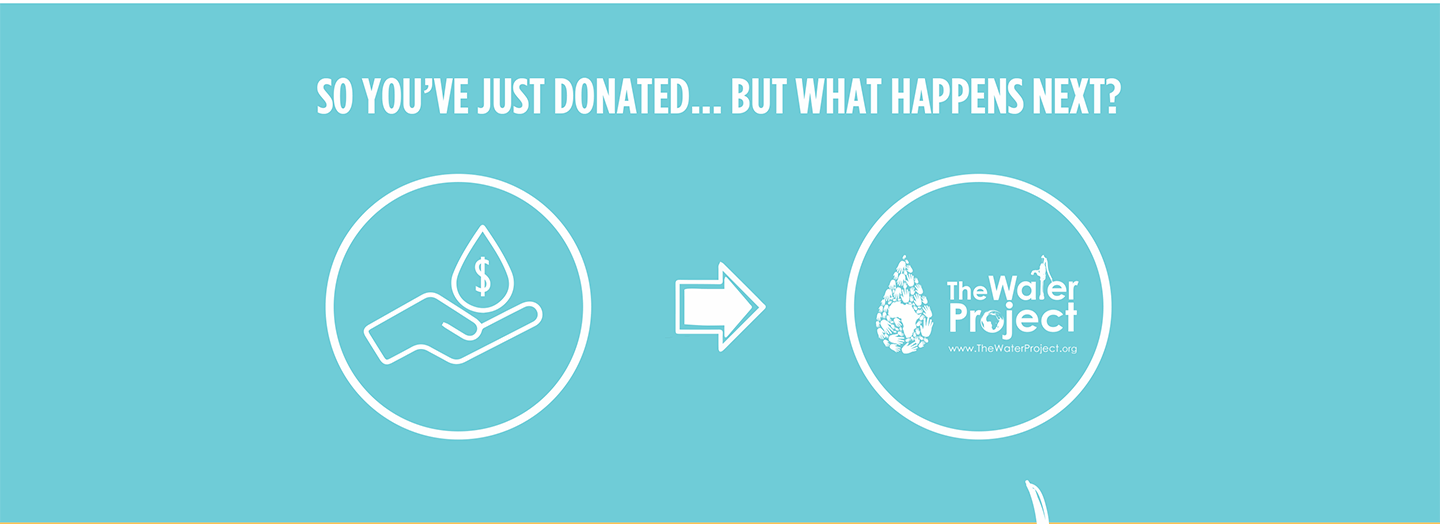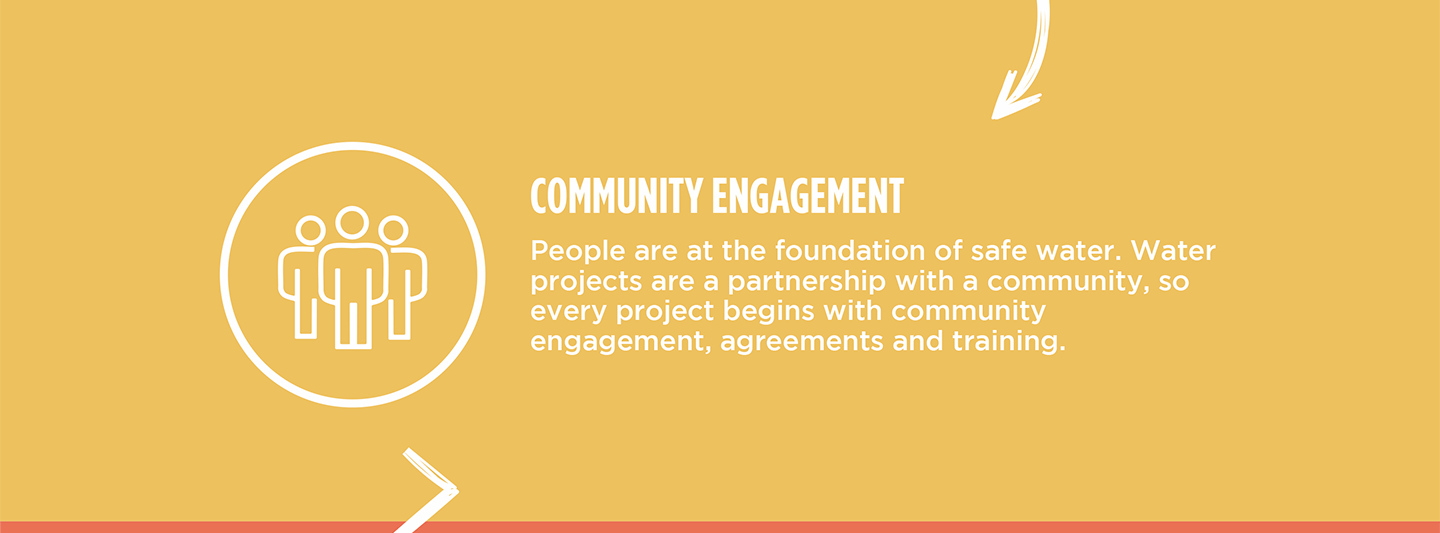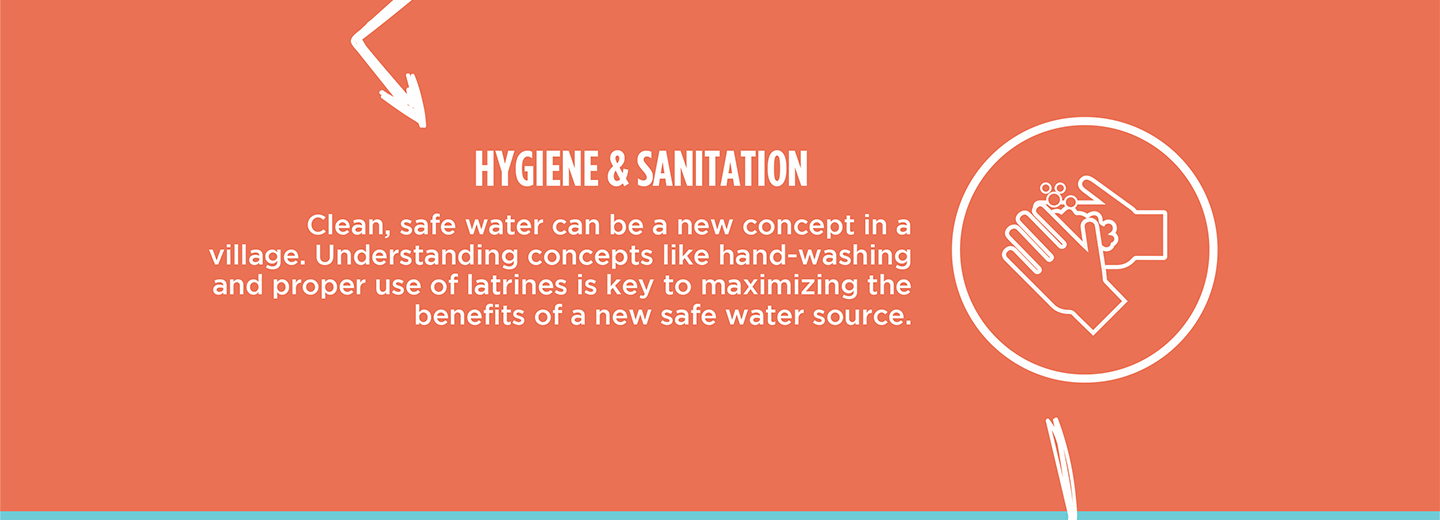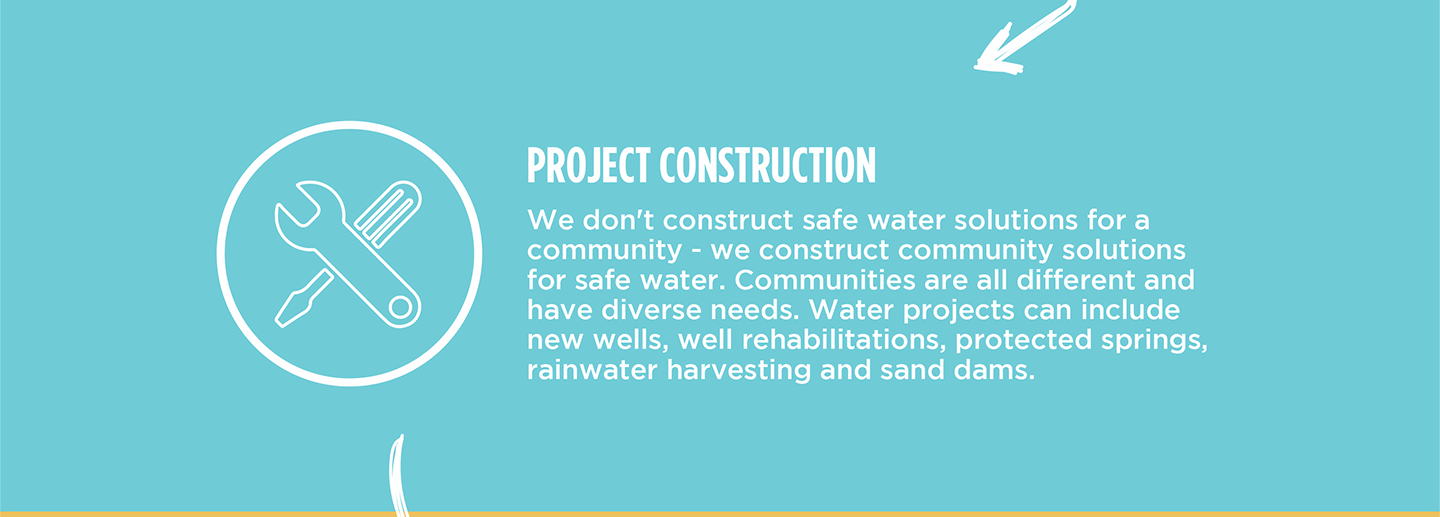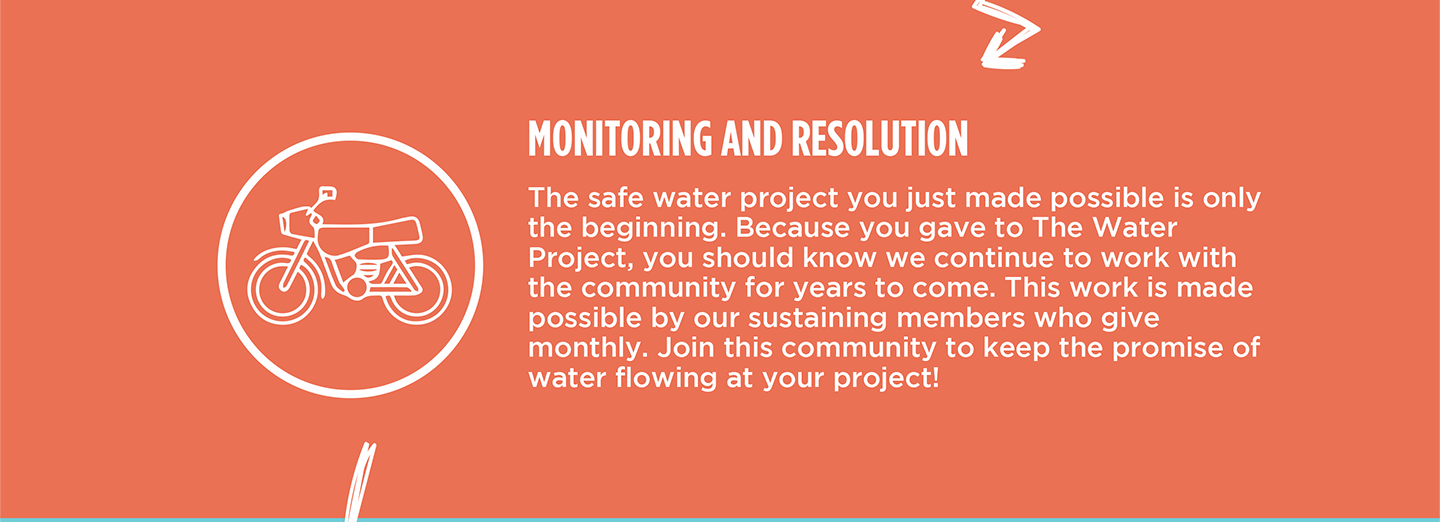The 250 people living in the community of Mache have a primary water source that is making them ill and costing them vital resources needed to progress in their daily lives. To the untrained eye, Joseph Were Spring may look like it is flowing well and that the water is clear and safe to drink, but contamination can't always be seen, and reports from community members confirm that the water quality is a serious concern.
Joseph Moiben Welabunuka is a thirty-seven-year-old farmer and community health promoter. He is intimately aware of the struggle. His family faces constant struggles related to consuming dirty water, but without an alternative, they have no choice.

Joseph collects water from the spring.
"Water is extremely essential since it prevents illness, quenches thirst, improves personal and environmental hygiene, and is also used for irrigation and animal feeding in my farming operations. Access to clean, safe drinking water is critical for overall health. As a result of consuming contaminated or unsafe water, my family is at danger of being ill," shared Joseph.

Joseph caring for his livestock.
"My sister-in-law recently drank water from this spring and became seriously ill with typhoid. She was then transferred to the hospital for treatment. Her body had a high level of typhoid; thus, she was admitted to the facility for nearly a week," Joseph continued.

Joseph carries water home.
"When we get sick, we usually go to the hospital. Because I am neither a civil servant nor any other employee, I am unable to pay for medical insurance, so the hospital expenses are frequently too costly. I lose a lot of money on medication. This annoys me because I am unable to pay my bills without a consistent source of income."
"Furthermore, because I do most of the farming work when I am sick, everything comes to a halt until I recuperate. This is a major setback."

Joseph sprays his crops.
Joseph and his community need a reliable, clean water source that will not make them ill. He works hard to care for his family and provide for them daily, but without clean water, he will continue in a cycle of poverty, expending all of his resources on treating water-related illnesses.
Protecting the community spring will rid the water of contaminants, giving Joseph and the rest of the community hope for the future.
Steps Toward a Solution
Our technical experts worked with the local community to identify the most effective solution to their water crisis. They decided to safeguard the existing flowing spring.
Spring Protection
Springs are natural water sources that originate from deep underground. As water travels through various layers of the earth, it undergoes a natural filtration process, making it cleaner and safer to drink. To protect these spring sources from contamination, we construct a waterproof cement structure around layers of clay, stone, and soil. This design channels the spring water through a discharge pipe, facilitating easier, faster, and cleaner water collection.
Chlorine Dispenser
As an extra measure towards water quality safety, uniquely engineered chlorine dispensers are installed at all of our spring protection projects so community members can treat their water with pre-measured doses of chlorine. The chlorine treats any residual contamination and stays active for two to three days, ensuring water stays safe to use even when stored at home. Chlorine delivery and maintenance of the dispensers are part of our ongoing community support.
Community Education & Ownership
Hygiene and sanitation training are integral to our water projects. Training is tailored to each community's specific needs and includes key topics such as proper water handling, improved hygiene practices, disease transmission prevention, and care of the new water point. Safe water and improved hygiene habits foster a healthier future for everyone in the community. Encouraged and supported by the guidance of our team, a water user committee representative of the community's diverse members assumes responsibility for maintaining the water point, often gathering fees to ensure its upkeep.
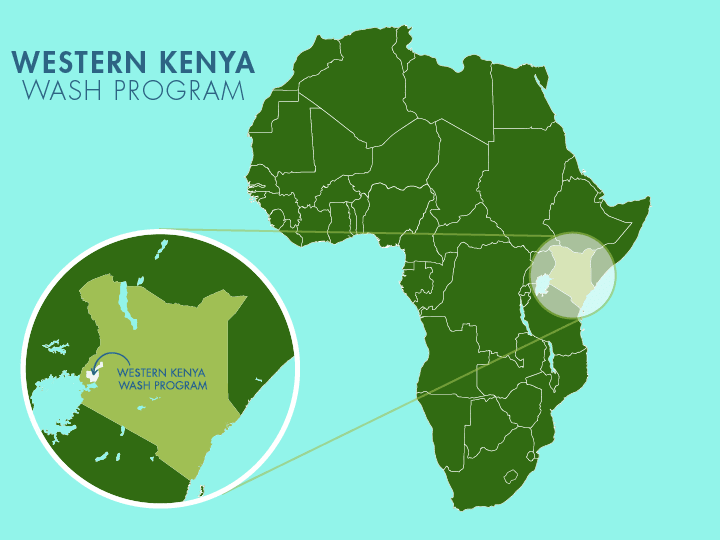
 Protected Spring
Protected Spring
 Rehabilitation Project
Rehabilitation Project

